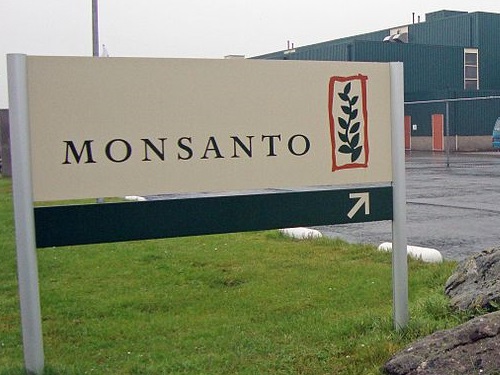- Marketing Mix Strategy ›
- Products ›
- Monsanto Marketing Mix (4Ps) & Marketing Strategy
Monsanto Marketing Mix (4Ps) & Marketing Strategy
Marketing strategy of Monsanto through marketing mix framework which covers the 4Ps (Product, Price, Place, Promotion).
Monsanto Product Strategy:
Monsanto is one of the leading agro-chemical and engineering companies. It has a wide range of agrochemical products and technologically driven new seeds and other products as a part of its marketing mix product portfolio. Monsanto launches new products very frequently and almost most of its funds are allocated to the reach and development team. Its products have also had their fair share of controversies and litigations mainly around their environmental impacts and health implications for people. Its product portfolio includes the following: a) Row crops- Monsanto produces specially engineered row crops which are herbicide resistant and have dicamba and glyphosate and other essential chemicals. b) Crop seeds- genetically modified and hybrid seeds mainly for corn, cotton, soy and vegetables. c) Glyphosate herbicides- It was the company which had a patent on glyphosates till 2000 being the proponents of glyphosate infused products. d)Agent orange – a herbicide used for military operations and purposes e) Bovine Somatotropin- a hormone increasing milk production when used. f) PCBs- polychlorinated biphenyls one of the major coolants which were used in the US g) Genetically modified crops like wheat.

Image: Wikimedia
This concludes the product strategy in Monsanto marketing mix & strategy.
Monsanto Price/Pricing Strategy:
Below is the pricing strategy in Monsanto marketing mix strategy:
Monsanto has various different patents on many technological advances it has discovered and charges hefty fees from countries wanting to use these patents. Its pricing strategy is unlike most others as it is into biotechnology and a technological company, its pricing policy is based on the R&D expenses incurred.
Its pricing is also based on the industrial prices prevailing for already present products and hence is competitively priced for such products. The focus is more on very high-quality products and better quality is one of its P-O-Ds so it charges relatively higher than its competitors. It recently increased its prices by a large margin citing high-quality changes on specific qualities and criteria. Prices in agrochemical industry are also affected by the government policies and measures adopted by the governments. Prices of raw materials directly affect the overall price of the products.
Read more about Monsanto
Monsanto Place & Distribution Strategy:
Following is the distribution strategy in the Monsanto marketing mix:
Monsanto has a vast distributive channel and operates in over 100 countries. It has a multi-channel distribution network and comprises of distributors, independent retailers, through agricultural organizations and through other channels. Procurement of raw materials from different sources is an important aspect of Monsanto’s operations and it does through from multiple local and multinational players. The supply chain of Monsanto is one of the key proponents of its success with innovation even in supply chain paving the way for operational efficiency and cost-cutting.
Data and decision science-based distribution and supply chain network has helped Monsanto achieve its goal of reaching maximum countries in time and in the right manner.
Monsanto Promotion & Advertising Strategy:
The promotional and advertising strategy in the Monsanto marketing mix is as follows:
Monsanto has a multi-channel approach to its promotion. It uses traditional promotional activities like TV ads, Print media channels like newspaper ads, etc. It also uses social media channels like Twitter to actively spread the word on its new products. Rather than what other companies of fashion or other industries would do Monsanto being an agrochemical company uses specific advertising approach promoting its products via scientific magazines, scientific websites and blogs. It stresses using its key partners for advertising its products. It recently had a tie-up with BASF, a German company for the co-promotion of its trademark trait seeds. Hence this concludes the marketing mix of Monsanto.
About Monsanto:
Monsanto, one of the leading agrochemical and genetic engineering companies is based out of Missouri, USA. It started in 1901 as a small startup in Creve Coeur in Missouri. It was acquired by Bayer in 2018 for around $65 billion. Monsanto was one of the first pioneering companies in genetically developed crops and one of the 4 companies who developed the first genetically infused plant in the world.
Bayer, its parent company is based out of Leverkusen, Germany and is one of the largest pharmaceutical companies in the world. Monsanto for many years was among the very few companies who introduced genetics in plants and also continued to produce technologically driven agro products.
This article has been researched & authored by the Content & Research Team which comprises of MBA students, management professionals, and industry experts. It has been reviewed & published by the MBA Skool Team. The content on MBA Skool has been created for educational & academic purpose only.
Browse marketing strategy and 4Ps analysis of more brands similar to Monsanto. The Marketing Mix & Strategy section covers 4Ps and 7Ps of more than 800 brands in 2 categories.
Continue Reading:
The names and other brand information used in the Marketing Mix & Strategy section are properties of their respective companies. The companies are not associated with MBA Skool in any way.
What is MBA Skool?About Us
MBA Skool is a Knowledge Resource for Management Students, Aspirants & Professionals.
Business Courses
Quizzes & Skills
Quizzes test your expertise in business and Skill tests evaluate your management traits
Related Content
All Business Sections
Write for Us